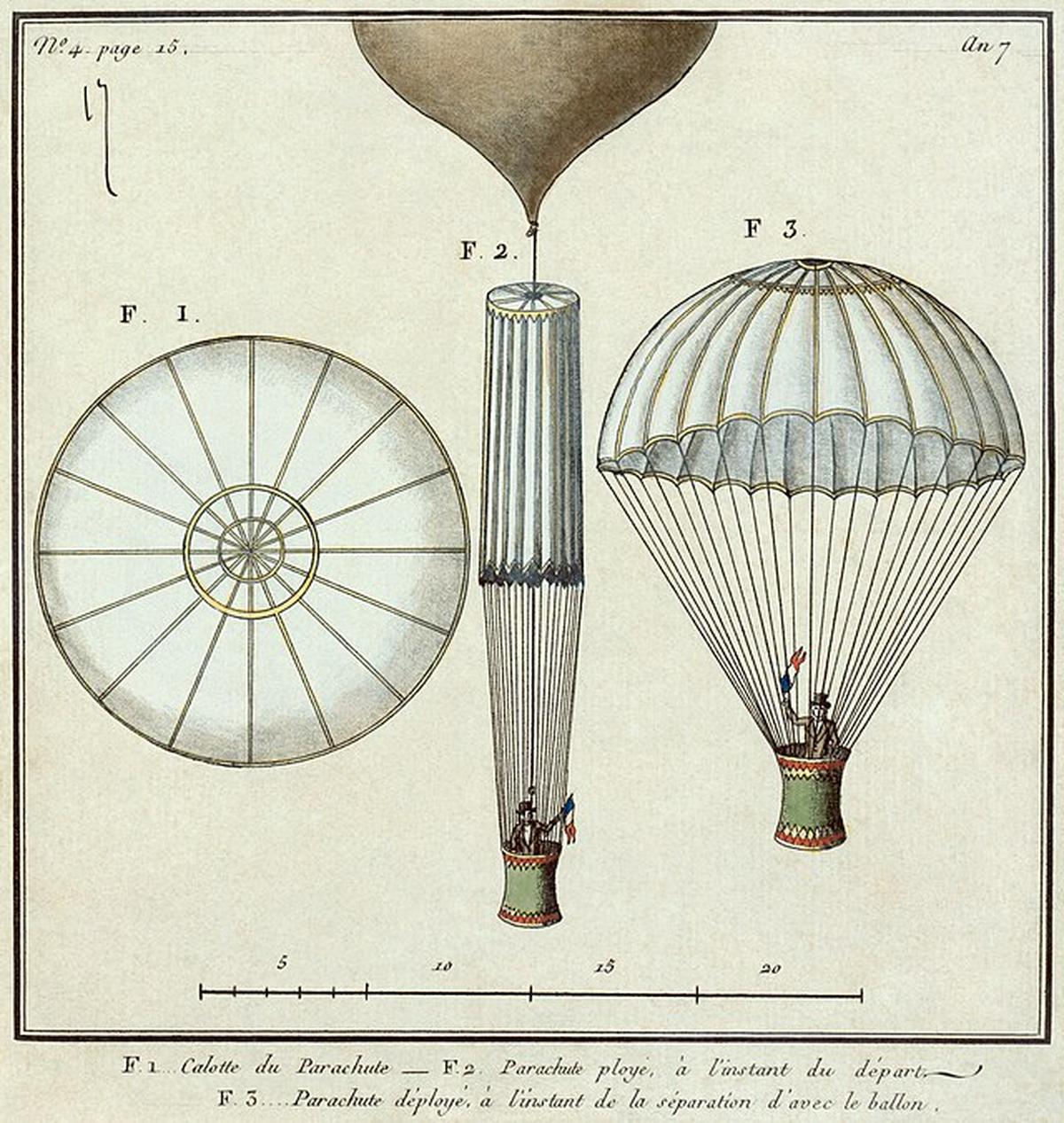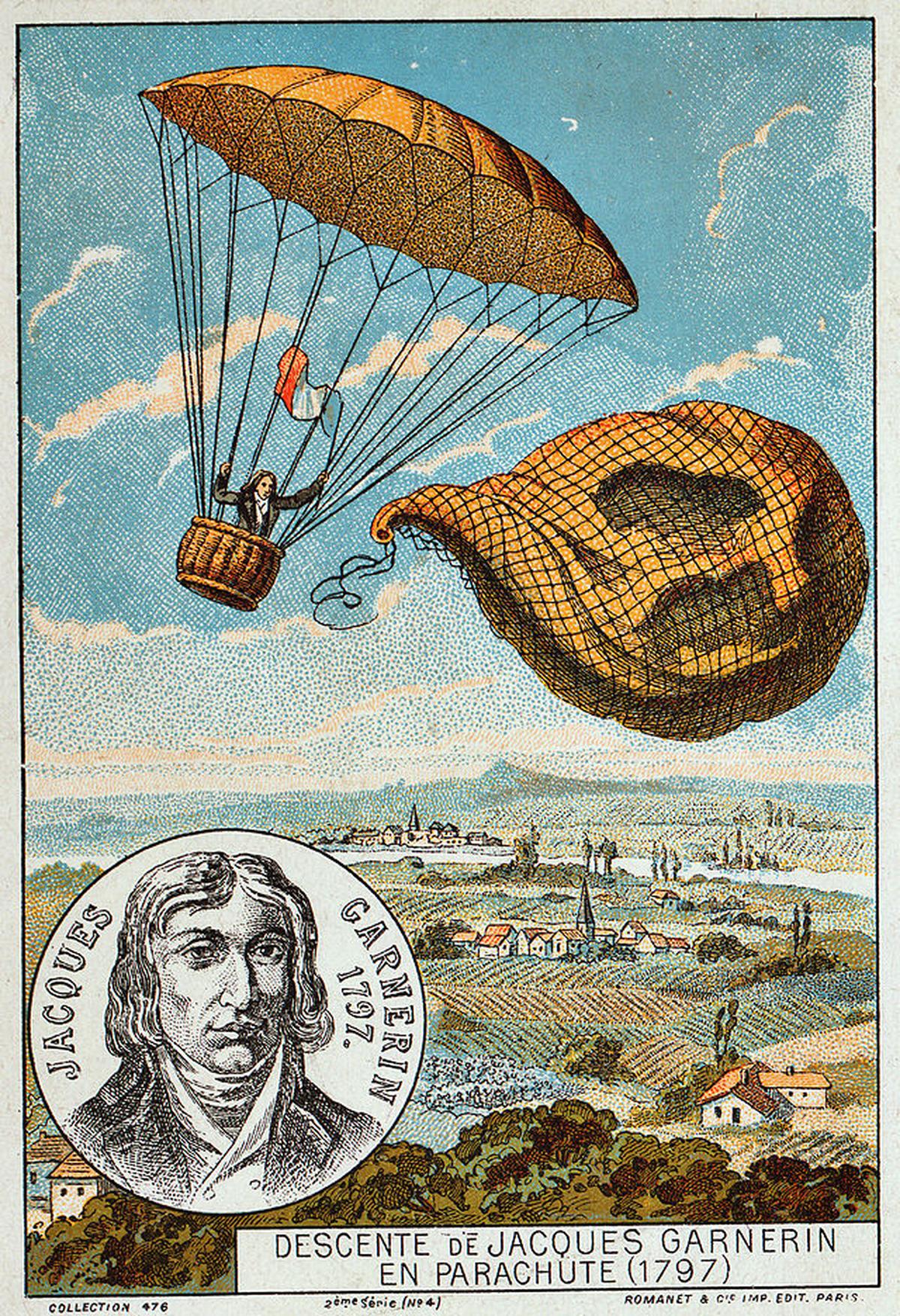A parachute lets you float in the sky, gazing at the vast lands below, before gently landing back on your feet. For adventure lovers, it’s an adrenaline rush and a moment to cherish forever.
The purpose: Slow and steady
A parachute’s main purpose is simple but life-saving: it slows you down in mid-air. When someone falls from a height, it’s the parachute that helps them descend gently, rather than plummeting at great speed due to gravity. The large, wide canopy increases air resistance or drag, by catching as much air as possible. This drag pushes against the pull of gravity, reducing speed and allowing the person to float safely back to the ground instead of crashing. In short, its shape is designed to create maximum resistance and keep your descent slow and steady.
Classic dome shape
Did you know the original parachute was shaped like a dome, similar to an umbrella? This circular design was chosen because it provides a stable and predictable descent. The even shape helps distribute air evenly across the canopy, keeping the person or cargo steady as they come down. That’s why dome-shaped parachutes were widely used for military jumps and for dropping supplies they’re reliable and easy to control for a straight, safe landing.

First parachute
Modern way up
Many modern parachutes, especially those used in sports and recreational skydiving, are rectangular or square in shape. These are called ram-air canopies, and they work differently from the classic dome design. Instead of just slowing you down, they act more like wings, letting the skydiver steer and glide through the air. This design gives more control and allows for smoother, more precise landings, which is why it’s become the preferred choice for sport parachuting.
How does steering work?
Modern rectangular parachutes can be steered using lines attached to the back corners of the canopy. By pulling these lines, the skydiver changes the shape of the canopy slightly, which makes it turn left or right, or even slow down more before landing. This ability to glide and steer is what makes the modern design so popular for sport jumps.
Now that you know how parachutes work, whether it’s a dome or square floating down, every fold and seam is designed to help skydivers land safely, can you figure out why they aren’t made in other shapes?

First real jump:
The first recorded parachute jump was made by André-Jacques Garnerin in 1797. He jumped from a hot-air balloon over Paris using a round canvas parachute, and landed safely!
Fun facts
A really old idea
The idea of a parachute goes back over 500 years! The first known sketch of a parachute was drawn by Leonardo da Vinci around 1485. His design showed a man hanging under a pyramid-shaped canopy.
Early materials
Before nylon was invented, parachutes were made of silk. Nylon replaced silk during World War II because it was stronger and cheaper.
Which layer of air?
Parachutes are designed to work in the troposphere, the lowest layer of Earth’s atmosphere where the air is thick enough to create drag.
Highest ever
The highest-ever parachute jump was made by Alan Eustace in 2014, when he leapt from a stratospheric balloon at an altitude of 135,890 feet. During his descent, he even broke the sound barrier before his parachute deployed, bringing him safely back to Earth.
Not just for humans
During wars, armies dropped food, medicine, and even vehicles by parachute to reach remote or dangerous areas. Space agencies use parachutes to slow down spacecraft and rovers when they land on other planets, like Mars
Published – August 04, 2025 03:46 pm IST
